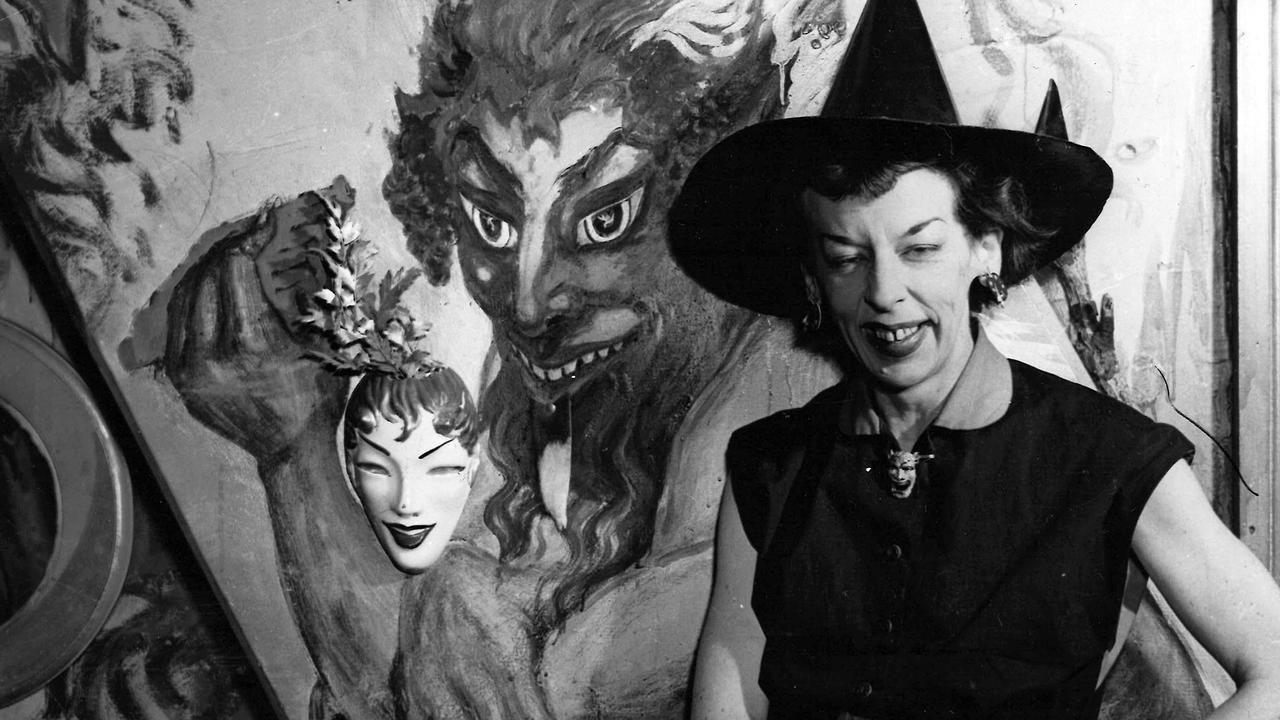How a bushman’s hunch saved air crash victims stranded for 10 days
When a plane full of men vanished in the early days of Australian aviation, it was one wily bushman who saved the day.

In Black and White
Don't miss out on the headlines from In Black and White. Followed categories will be added to My News.
A week after a plane vanished while flying from Brisbane to Sydney in 1937, all hope was lost.
But a local bushman named Bernard O’Reilly followed a hunch, and trudged into remote rainforest to pull off one of Australia’s most improbable survivor rescue stories.
O’Reilly is the subject of a new episode of the free In Black and White podcast on Australia’s forgotten characters:
The story is told by Chris Adams and Helen Goltz in the latest edition of their Grave Tales series of books: Scenic Rim & Surrounds Queensland.
The Stinson aircraft set off from Brisbane, the pilot unaware he was about to hit heavy cyclonic gales over the McPherson Range.
When the aircraft crashed and erupted in flames, the pilot and co-pilot and two passengers were killed.

Three men survived: Jim Westray, 25, an insurance underwriter for Lloyds of London, Joe Binstead, 54, a company director and wool broker from Sydney, and John Proud, 30, a mining engineer and member of the Prouds jewellery family.
Westray headed off into the impenetrable bush the next morning, believing he could see a farm in the distance, and was never seen alive again.
With Proud unable to walk after breaking a leg in the crash, Binstead foraged for berries and used a damaged flask he found beside the burnt-out aircraft to collect water from a stream down in a valley.
But both men grew weak from lack of food and water, limiting Binstead’s trips to one a day.


“He’d go down into the valley at about three in the afternoon and stay there overnight, returning to the wreck site with water for Proud the next morning,” Chris says.
The men used ripped clothes to bandage Proud’s wounds and keep the flies out.
“On day five of their ordeal, it became clear that the leg was flyblown,” Chris says.
“In a state of desperation, they cleaned the wounds every day with a pocketknife.
“After 10 days of this terrible existence, Joe Binstead and John Proud were almost at their end.”
The search was hampered because the plane’s route was unknown, and many believed it had taken a coastal path and plunged into the ocean.
But O’Reilly, whose family ran the local Lamington Guest House, had a hunch.
A keen bushwalker, O’Reilly knew the thickly forested McPherson Range nearby better than anyone, and knew it had not been searched on foot and a wreck would be hard to see from the air.
Visiting his brother Herb’s home eight days after the crash, O’Reilly scoured the newspapers for clues.



Herb had seen the aircraft flying overhead towards the McPherson Range, and O’Reilly became convinced he had to go and find what he assumed would be only wreckage.
The next morning, O’Reilly contacted his friend Bob Stevens, one of the last people to see the plane in flight, and got an approximate position and course.
“Using an aerial survey map, he drew a pencil line that indicated the Stinson’s course,” Chris says.
“This is where it gets kind of incredible.”
O’Reilly set off on horseback, but once the terrain became too rugged he sent his horse home and continued on foot.
He estimated there was about 30,000ha of “unbroken, trackless jungle” on the McPherson Range, with visibility mostly limited to 10 yards (9m).
He needed a quicker way.



So O’Reilly climbed to a high vantage point, looked in the direction of the Stinson’s path, and eight miles (13km) ahead saw a clue – a light brown treetop.
He believed it was caused by a plane crashing and catching fire, and he was right.
It took another eight hours for O’Reilly to reach the tree, and find the wreck and the two survivors.
The first words O’Reilly remembers either man saying were Binstead’s: “How about boiling the billy?”
O’Reilly was too late to save Westray, whom he tracked to a gorge and found dead.
But he was able to bring in a rescue party, and Proud and Binstead survived the ordeal, going on to reach the impressive ages of 90 and 87 respectively.
Despite shunning the spotlight, O’Reilly became a hero, and a parade was thrown in his honour when he and his wife visited Sydney.

Listen to the interview about Bernard O’Reilly with Chris Adams in the In Black and White podcast on iTunes, Spotify or web.
See In Black & White in the Herald Sun newspaper Monday to Friday for more stories and photos from Victoria’s past.
Buy the book here.




